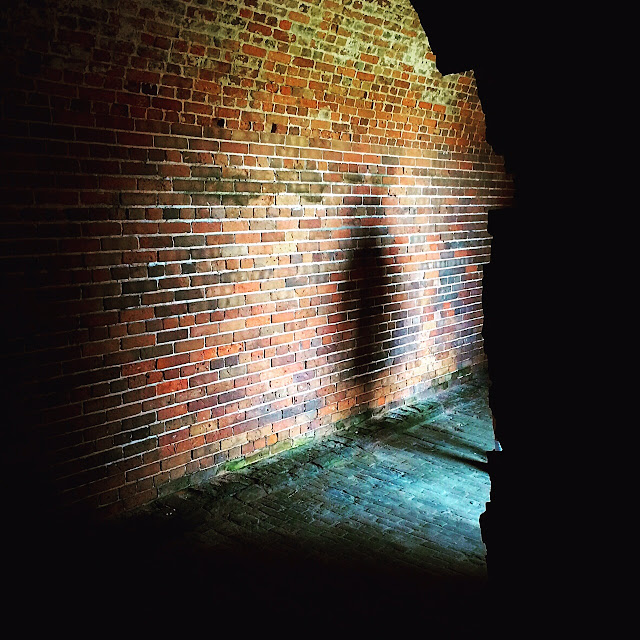On a sun-splashed morning, two men fished in the surf, a couple walked slowly on State Rt. 180 and a handful of visitors surveyed the immense brick walls of historic Fort Morgan, one of the Rebels' defenses along Alabama's Gulf Coast. Several miles down the two-lane road to the fort, vacation homes dot the landscape near white sand beaches, where hundreds of tourists enjoyed perfect summer weather. Nearly 151 years earlier, the scene along this coast was much different ...
... For the 500-plus Rebel soldiers garrisoned at the fort, life was bleak. Fort Morgan was a key outpost guarding strategic Mobile Bay, but its remote location led scores of men there to turn to an age-old demon: alcohol. "Many of the soldiers here were drunk all the time," a living historian at the fort told me during my recent visit. The interactive panorama above shows the "murder ditch." If an enemy got this far, the fort's defenders might fire, say, canister from the embrasures, making life quite difficult for attackers ...
and World Wars I and II.
When Admiral David Farragut's 18-ship fleet tried to slip past the fort and into Mobile Bay on Aug. 5, 1864, one of his vessels, the ironclad U.S.S. Tecumseh, was sunk by a mine with a loss of nearly 100 sailors. The wreck of the ship still lies today upside down at the bottom of Mobile Bay, apparently untouched by archaeologists since the late 1960s. After an 18-day siege by forces that included the 2nd Connecticut Light Artillery, the Yankees captured the fort on Aug. 23, 1864. The four-story citadel in the fort's interior -- the barracks where many of the enlisted men lived -- was heavily damaged during the 1864 siege and later torn down. Little evidence of it remains today. ...
 |
| View of cramped quarters for soldiers at Fort Morgan. |
 |
| 1864 image of the ruins Fort Morgan. (Library of Congress) |
On April 30, 1863, Fort Morgan's Confederate commander was decapitated when a cannon tube exploded after it was test-fired. "I immediately went over and found that his head was entirely severed from his body and scattered some distance," a comrade wrote in a brutally honest letter to Lieutenant-colonel Charles Stewart's wife that July. "...I believe the piece that struck him, from observation made by other officers, myself, weighed over 200 pounds -- after hitting him it struck against some sandbags and fell into the ditch below. I am satisfied that he never knew what hit him." Pieces of the officer's head, Charles Collins noted in the letter to his Stewart's wife, were gathered and placed in his coffin. A partial dental plate was also collected -- it may be seen today in Fort Morgan's museum along with a transcript of Collins' letter...
... On Feb. 12, 1861, two months before the war started, a Rebel chaplain drowned in Mobile Bay, on the north side of the fort. An Alabama Historical Association marker (below) near the site notes that 23-year-old Noble Leslie DeVotie, a former student at the University of Alabama and a founder of the Sigma Alpha Epsilon fraternity, was the "first Alabama soldier to die in Civil War." Of course, the war did not officially begin until the Rebels bombarded Fort Sumter in Charleston Harbor on April 12, 1861. DeVotie's body was recovered three days after he drowned.
 |
| Confederate chaplain Noble Leslie DeVotie drowned near the fort on Feb. 12, 1861. |














